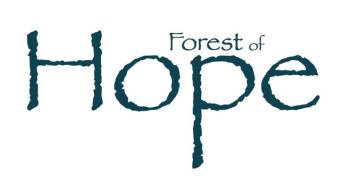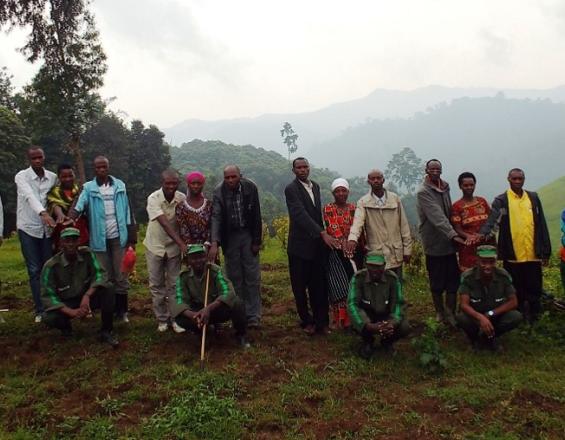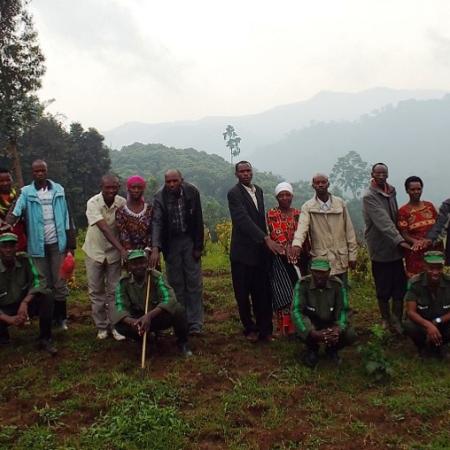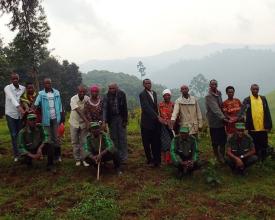
Renforcer la résilience des communautés locales et améliorer les moyens de subsistance autour du parc national de Gishwati, au Rwanda

Pour assurer la protection de la forêt de Gishwati, l'association Forest of Hope (FHA) a lancé l'"Initiative de protection de la forêt communautaire", une nouvelle approche visant à aider les communautés locales à jouer un rôle actif dans la protection de la forêt. Six agents communautaires et six comités communautaires, composés chacun de trois personnes, sont actifs et fonctionnent ensemble comme gardiens de la communauté et de la forêt. Le rôle de ces agents et de ces comités est de patrouiller dans la forêt et d'éduquer la population locale sur son importance et sa biodiversité. La contribution active de la communauté locale et le soutien des autres parties prenantes, y compris les dirigeants locaux, sont des éléments essentiels au succès des efforts de la FHA pour protéger la forêt de Gishwati, ainsi qu'une perspective claire des responsabilités et des devoirs de chaque acteur. Cela a également permis d'influencer le gouvernement pour qu'il fasse de cette forêt un parc national. La FHA est toujours prête à renforcer la collaboration avec la communauté locale pour la protection de Gishwati afin de pérenniser ses résultats.
Contexte
Défis à relever
La forêt de Gishwati abrite des primates en voie de disparition et joue un rôle majeur dans l'approvisionnement en eau douce de la région, mais sa conservation est compromise depuis de nombreuses années par le pâturage massif du bétail, la récolte illégale de charbon de bois, de bois d'œuvre, de matériaux artisanaux et de miel, l'exploitation minière et les incursions agricoles.
Emplacement
Traiter
Résumé du processus
Les deux sont combinés pour obtenir l'impact réel nécessaire.
Blocs de construction
Obtenir le soutien des communautés locales et des autres parties prenantes
La contribution active de la communauté locale et le soutien des autres parties prenantes ont été un élément essentiel du succès des efforts de la FHA pour protéger la forêt de Gishwati, ainsi qu'une perspective claire des responsabilités et des devoirs de chaque acteur. Cela a également permis d'influencer le gouvernement pour qu'il fasse de cette forêt un parc national.
Facteurs favorables
Dans le domaine de la conservation, l'implication et le soutien des communautés locales sont des facteurs clés de succès. Ce qu'il faut, c'est les organiser et leur permettre d'agir.
Leçon apprise
Guider les communautés locales pour qu'elles gèrent elles-mêmes leurs ressources naturelles est un facteur important de réussite. Notre approche combine l'emploi de la population locale, le soutien aux communautés locales pour qu'elles protègent elles-mêmes la forêt, l'éducation et la sensibilisation des communautés, la résolution des conflits entre l'homme et la faune au moyen d'accords de conservation et l'amélioration des moyens de subsistance locaux grâce au développement du tourisme communautaire.
Soutien pratique et renforcement des capacités pour l'amélioration des moyens de subsistance au niveau local
La FHA soutient les agriculteurs locaux dans leur activité d'apiculture par le biais d'accords de conservation. Ils utilisent les revenus générés pour nourrir leurs familles et acheter du fil de fer pour clôturer leurs pâturages afin d'empêcher les vaches de pénétrer dans la forêt.
Nous aidons 10 coopératives locales à renforcer leurs capacités et à améliorer leurs produits ; trois d'entre elles bénéficient d'un soutien pour le développement de l'écotourisme. Elles utilisent leurs revenus pour acheter des alternatives à ce qu'elles collectaient dans la forêt.
10 de nos 12 employés viennent de villages locaux. Les revenus qu'ils gagnent les aident à améliorer les moyens de subsistance de leurs familles et les aident également, ainsi que leurs familles et leurs voisins, à changer d'attitude à l'égard de la conservation de la forêt.
Facteurs favorables
La communauté a besoin d'alternatives aux ressources forestières pour assurer la durabilité de la conservation de la zone protégée.
Leçon apprise
La FHA s'appuie sur de petites subventions et nos réalisations impressionnantes confirment que, quelle que soit la somme investie, le message qui sous-tend la création d'un partenariat solide est un facteur de réussite. La FHA utilise des accords de conservation qui aident les populations locales à comprendre comment elles doivent s'impliquer dans la conservation.
Impacts
Grâce à l'initiative de protection des forêts communautaires, la FHA a obtenu de grands résultats :
l'utilisation illégale de la forêt a fortement diminué ; la taille du GFR est passée de 900 à 1 500 hectares, le nombre de chimpanzés est passé de 13 à 30, les 600 hectares ajoutés à la forêt centrale se régénèrent naturellement et les chimpanzés ont commencé à utiliser cette zone.
Les capacités de 10 coopératives locales ont été renforcées et 3 d'entre elles ont également été habilitées à développer le tourisme. Elles utilisent les revenus pour acheter des alternatives à ce qu'elles collectaient dans la forêt.
13 éco-clubs scolaires ont été créés et soutenus dans l'éducation à l'environnement. 10 de nos 12 employés sont originaires de villages locaux et utilisent les revenus qu'ils gagnent pour améliorer les conditions de vie de leurs familles. Cela permet également à leurs voisins de changer d'attitude à l'égard de la conservation de la forêt. En effet, les attitudes de la population locale ont évolué positivement, passant de 27 % en 2008 à 75 % en 2018.
La plus grande réussite est que la forêt de Gishwati est aujourd'hui classée comme parc national. Nous sommes convaincus que le partenariat pour la conservation de la communauté continuera à être soutenu.
Bénéficiaires
Nos bénéficiaires directs ont été et continueront d'être les personnes vivant dans quatre secteurs du district de Rutsiro, dans l'ouest du Rwanda, où se trouve la forêt de Gishwati.
Objectifs de développement durable
Histoire

Forest of Hope Association (FHA) est une organisation non gouvernementale locale issue du Great Ape Trust/Gishwati Area Conservation Program (GACP), qui a assuré la conservation de la réserve forestière de Gishwati (GFR) de 2008 à 2011. FHA a été créée en 2012 par des cadres du GACP dans le but d'impliquer la communauté dans la conservation de la GFR.
Grâce à l'initiative de protection de la forêt communautaire, nous avons obtenu de grands résultats : l'utilisation illégale de la forêt a fortement diminué ; la superficie de la réserve forestière de Gishwati est passée de 900 à 1 500 hectares, le nombre de chimpanzés est passé de 13 à 30, les 600 hectares ajoutés à la forêt centrale se régénèrent naturellement et les chimpanzés ont commencé à utiliser cette zone.13 éco-clubs scolaires ont été créés et soutenus, et la capacité de 10 coopératives locales a été augmentée, 3 d'entre elles ayant également été habilitées à développer le tourisme. En effet, les attitudes de la population locale ont évolué positivement, passant de 27 % en 2008 à 56 % en 2011 et à 75 % en 2013. Mais la plus grande réussite est que la forêt de Gishwati est aujourd'hui classée comme faisant partie du parc national de Gishwati-Mukura.
Sans protection officielle du gouvernement, la FHA a joué un rôle essentiel dans la survie de la forêt de Gishwati en tant que seule organisation travaillant à sa conservation et à sa restauration. Il ne fait aucun doute que sans sa présence, le pâturage massif du bétail, la récolte illégale de charbon de bois, de bois de chauffage, de matériaux d'artisanat et de miel, l'exploitation minière et les incursions agricoles auraient repris.
FHA s'appuie sur de petites subventions et nos réalisations impressionnantes confirment que, quelle que soit la somme investie, aider les communautés locales à gérer elles-mêmes leurs ressources naturelles est un facteur de réussite important. Notre approche combine l'emploi de la population locale, le soutien aux communautés locales pour qu'elles protègent elles-mêmes la forêt, l'éducation et la sensibilisation des communautés, la résolution des conflits entre l'homme et la faune par le biais d'accords de conservation et l'amélioration des moyens de subsistance locaux par le biais du développement du tourisme communautaire.
